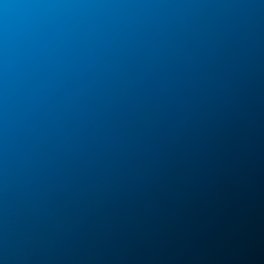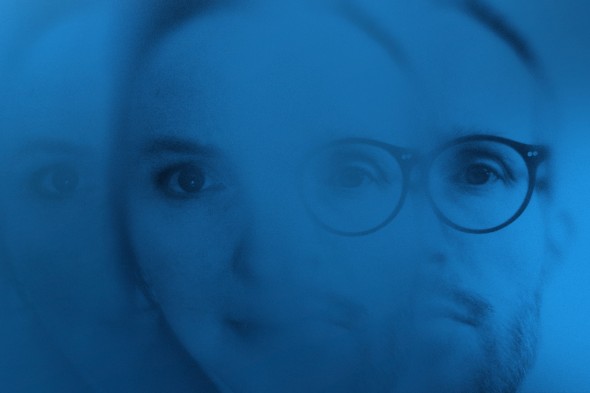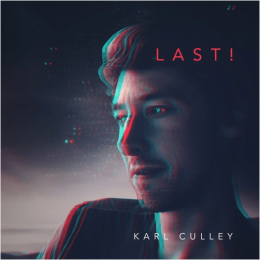Mariska Baars / Rutger Zuydervelt – eau

CD and Download Time: 30:10
https://machinefabriek.bandcamp.com/album/eau
There is an awakening, but the mind is foggy, vision blurry and hearing is trying to clarify. Then the realization, the nearly imperceptible, but ever-present rhythm of waves, and the enduring ebb and flow of the tides. It is caused by the slow dance of the Earth and Moon as well as the sinuous atmosphere. The flow is incoming, then retreating, at advancing times each day. The macro-rhythm of the water moves predictably, but it’s never the same. One could awaken one day to an ebb, and the next to a flood.
States of mind can change in daydreams as alpha waves are created and then dispersed by fleeting sounds, glimmers of light, gentle movements or drifting aromas. Where do we begin with eau, where do we end, does it really matter? Perhaps, in a way, that’s kind of the idea. It’s cyclical, it cleanses the mind, washing away thoughts that are distracting, while immersion within it aids in blurring the sense of time.
Although moderately indistinct while in a state of relaxation, I detect that eau is divided into four parts, but again, does it really matter to the overall perception of the experience?
One: At first, jittery granular voices, with gently plucked electric guitar (buzzing occasionally with a tightly controlled Frippian growl). Then there are more distinct and gradually entwined loops of voices and guitar, which transform into choral harmonies.
Two: About halfway into the recording there is a respite of tonal percussion, keyboards and (perhaps) guitar harmonics, but still with a gentle undercurrent of voices. It’s like lying in the bottom of a boat, in a gentle breeze, and hearing the water gently wash against the hull.
Three: At about seventeen-and-a-half minutes, voices and guitar return (recurrent flow), but it is a tide with percussive flotsam and jetsam. Some surprises have washed in. Sounds are crisper.
Four: Just before twenty-two minutes, a threshold is encountered after expanding layers of voices and sizzle (more of that subtle growl too). Then…a plucked string casts the sounds off into the distance, where they gradually become more indistinct. The voices and sounds are gradually hushed, akin to a quiet harbor at night. A fog seems to roll in, with the quietude.
In a way, like the shift of advancing tidal rhythms, eau could be encountered at any point in the recording, and left to loop, even slowing the speed to change the sounds and distort the sense of time further. The choice of how to encounter eau could be up to the listener.
There are no rip currents here, only calm seas.
****
Mariska Baars has worked with Rutger Zuydervelt both as a duo in 2008, on the album Drawn as well as with the quartet Piiptsjilling. Rutger Zuydervelt records as a solo artist, as well as with many different collaborators and is also known by the moniker Machinefabriek. EAU was mastered by sound artist and musician Stephan Mathieu.

This is a solicited review.
Karl Culley – Last


Format: Digital only
Time: About 74 minutes
Tracks: 1) Perfection Only Exists In The Mind 2) Nastassya 3) In A Sky Of Infinite Suns 4) Listen 5) Mistakes 6) The Föhn Wind 7) Wedding And Funeral Shoes 8) Amethyst 9) Devil In A Damn Fine Suit 10) Being Alive 11) 1, 2, 3 12) Delivered (My Maja) 13) Windows 14) Ghost Made Blood 15) Reality Is Like The Sun 16) How It Works 17) The Siege Of Antioch 18) Dale 19) St. Crispin’s Day 20) Embers 21) Looking Back Blues
Some readers may remember my review of Karl Culley’s 2015 album, Stripling. His new album Last (to be released on September 1, 2018) was recorded over the last three years in Culley’s home of Krakow, Poland. The good news is we have new music from Culley, and he is also now a father of a young daughter. The sad news is the turmoil in his life, a divorce, and due to various responsibilities he has decided this will be his “last” album of music.
The engineers for this album are Jaroslaw Zawadzki in Poland and Daniel Webster in England (the two tracks: Nastassya and Listen, with Webster playing all instruments, except for Culley on acoustic guitar). At first, I listened to this album at home, in my little studio, then I took it on a long road trip to and from the Adirondacks (in upper New York State), to get to know it better. It’s an excellent road trip album, by the way.
The subjects of this collection are both within the mind (things that can be imagined) and actual experiences (both joyous and painful). This album is pretty dense, and with 21 tracks, I found that I needed about two sittings to get through it, which is NOT at all a negative comment. Just the opposite, since the album is of a quality that demands a listener’s rapt attention. In my opinion, this is not a collection of background music. Coincidentally, at the mid-point of the album, is the metronomic instrumental 1, 2, 3, which serves as a bit of an intermission, before part two.
Culley deftly conveys the emotion of a given moment or the subject with only his acoustic guitar (ignoring the lyrics, for the moment), since the rhythms, strumming and picking reveal the intent of the song, like gently descending notes (like Embers falling in a fire) or a galloping heart beat (Being Alive) or the tender waltz (rocking cradle) beat and comfort and contentment in Delivered (My Maja). Maja also plays tricks with time, at first it’s the marvelous intimacy of having a newborn child on one’s chest, and then four lines later to “…unfurl to your consorts…” In a sense, preparing to release her to the world in her later years (children DO grow up quickly, as I can attest).
Without knowing (or wanting to know) the details of Culley’s private struggles over the last three years, it’s clear from this album that there are many complexities to love, relationships, and resentment. Have a listen to the darkness in Nastassya (which I am told is based on Dostoyevski’s The Idiot) or the anger and harsh reality in How It Works.
One of my clear favorites on this album is In A Sky Of Infinite Suns, with its snappy taut rhythm–I found that I kept hitting replay on my car CD player to keep the energy going. Another of the near-breathless pieces is Being Alive, with its galloping rhythm of angst “…just being alive hurt so much…looking into the mouth of a liar…like walking through the fire hurt so much…” (also sounding like a fast-beating heart with the lyric “…swells in the blood…”). By contrast there are contemplative meditations like Listen, and Reality Is Like The Sun that are both reflective and perhaps self-analytical (just like the more energetic and playful Mistakes). I wonder if KC finds that his own music can function as a form a therapy? I certainly find music to be quite therapeutic, whether energetic or comforting.
There are moments of keen observations of the bizarre, but absolutely true aspects of life, like in Wedding And Funeral Shoes, as well as moments of levity, Devil In A Damned Fine Suite. Overall, Last is a fine balance of musicianship and storytelling in a similar vein to the earlier acoustic works of Gordon Lightfoot, and if one listens carefully, one might pick-up the descending tones reminiscent of the opening to Nick Drake’s Chime Of The City Clock in The Siege Of Antioch (a pretty heavy observation on the First Crusade). The last song on the album, Looking Back Blues, is a reflection of sadness for a time past, but (perhaps) an appreciation that the passage of time can yield after the breakup of a relationship…there will always be a connection, especially when a child is involved.
I am sorry that Karl Culley is leaving the music scene, alas the realities and responsibilities of life somehow do take over, but I hope KC finds other rewarding endeavors for his talent and creative spark, and hope he enjoys watching his daughter grow up.
Take care and best wishes, Karl.
***
This is a solicited review.
Damián Anache – Capturas del Único Camino
CD Time: 57:57, Digital, 300 copies of CD or 150 copies of Deluxe CD #CCL011 & #IR003
Tracks: 1) Paisaje Primero, 2) Paisaje Propio, 3) Paisaje Artificial, 4) Paisaje Natural
Websites: http://damiananache.com.ar/ &
https://damiananache.bandcamp.com/album/capturas-del-unico-camino
Labels: Concepto Cero & Inkilino Records
Think of the hour just before sunrise, in Spring especially, the Sun hasn’t yet peeked above the horizon. The songs of birds and sounds of other animals slowly rise with the Sun. Eventually there is a wondrous sonic aura filling the morning, until the Sun is firmly in the sky and the impromptu performance gradually fades. A similar effect occurs at sunset as the gentle evening-song of birds and other fauna greet the night. The sound landscape can, at certain locations, grow to be almost deafening, yet there still remains a feeling of ease and relaxation. Other sounds might enter: wind, rain, trees moving, a distant coyote howling to its pack or even the sounds of a city or shipyard. Taken as a whole, the soundscape has no apparent patterns or melodies, and it spontaneously exists without apparent forethought or design. Isolate individual elements with the ear and some patterns may be detectable, whether from a songbird or the rubbing of an insect’s wings.
Although Argentine composer Damián Anache’s method of creation for his debut album Capturas del Único Camino is different in its technical execution, the resulting experience is similar to how sound is generated in our environment. Anache’s works have been performed at events at the Conservatorio Santa Cecilia (Rome), National University of Cordoba (Argentina), Museum of Modern Art in Ecuador (Quito) and the Cultural Center of Spain in Buenos Aires, among others, in addition to his guest musician appearances at several performances of live experimental music, and as a producer of local rock bands in Argentina. This album is also an outgrowth of the research project Spatial Sound Synthesis in Electroacoustic Music, directed by Oscar Pablo Di Liscia at the National University of Quilmes.
In Capturas, Anache prepared a collection of recordings using acoustic instruments (piano, guitar, glockenspiel, percussion, etc.), voices (the composer’s voice, including falsetto), electronics and field recordings of water (distant and near-field). He then generated a series of four interconnected soundscapes using a software-based technique to randomly select and place the recorded sounds into an interlocked linear progression (I’m not familiar with the software, so I’m taking this at face-value). While the recordings are largely abstract, non-representational of place and without identifiable melodic or harmonic structure, they can be quite spatial in their interaction with each of the other recorded elements. There are also transitions between the four parts where fragments of the subsequent movement appear towards the end of the previous movement coupled with a mild crescendo to generate a disguising sleight-of-hand between the sections.
In Paisaje Primero, strings are plucked, hammered and bowed lightly, percussion is struck gently and the sounds are untreated and naturally resonant. This is the softest and most spacious of the four movements, more furtive than calming, and is without a detectable melody or pattern. Voices appear in Paisaje Primero within about two minutes of the transition to Paisaje Propio. There are also gentle whispers and hushed vocalizations combined with placid trills and hisses. At times, the voices have a character of bowed strings, and I could be wrong, but I also detect some sounds of what could be a cello.
Near the close of Paisaje Propio synthetic sounds are combined with the voices and the character of Paisaje Artificial shifts quite dramatically from the acoustic environment of the first two movements. Paisaje Artificial is more industrial with a static-electric atmosphere, where sounds could be generated by the interaction of conflicting frequencies of radio interference or magnetic waves as one moves through space. Some sounds are pure sine-wave, and the higher frequencies are crystalline and sometimes piercing; so the listeners’ ears should be somewhat prepared, especially if headphones are in use. On the cusp of passing from the Paisaje Artificial realm, the electronics seem to be mildly treated for the appearance of water in Paisaje Natural. Water is presented near and far, as drips, a stream, bubbles, waves and perhaps rain falling from a roof to the ground. There are short cycles in this piece that last about three or so minutes, like passing rain showers, so there is not only gentle motion in the individual recordings, but also in the overall movement. Near the mid-point of Paisaje Natural the sounds of birds appear in the distance, and the treatment of the recording shifts from one existing within the recordings to one of observing from a vantage point of some kind of shelter (this may be unintentional, and purely my own interpretation).
Capturas del Único Camino is well-suited to both a pure listening experience or as part of an audio-visual installation. Despite its apparent minimalist structure and execution, Damián Anache has created a curiously soothing yet complex realm in his debut recording. Rise early in the morn or linger at dimmity, and let the music be revealed.
****
This is a solicited review.



